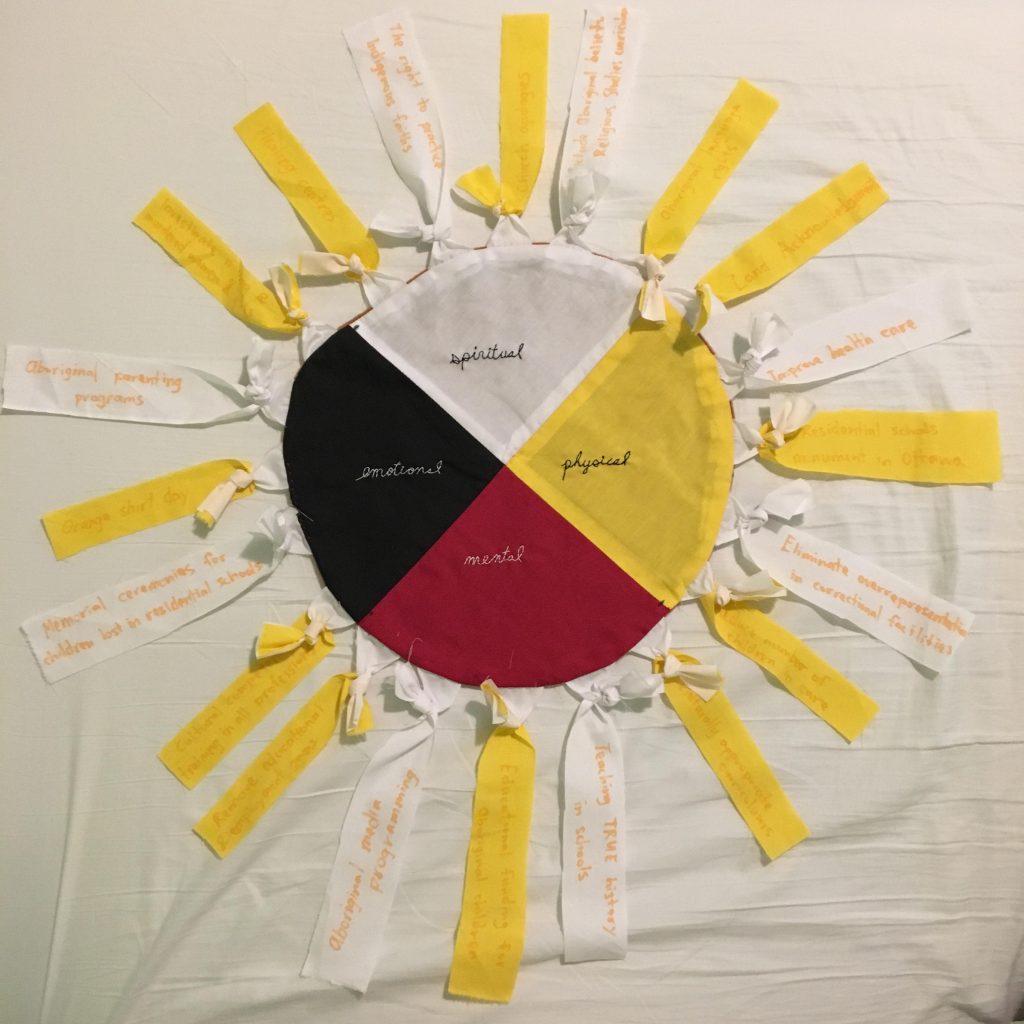Excerpt from Autobiographical Reflective Paper
“It is said that teachers teach how they were taught, but much to the chagrin of the adults in my life while I was growing up, I’ve never accepted the concept of ‘this is just how we do things.’ I of course don’t know exactly what my teaching style is going to be just yet. However, I do know that I will love each of my students to the best of my ability, that my enthusiasm for learning will be visible to everyone I am able to teach, that I will teach children how to think, not what to think, and that I will challenge each student to be the best that they can be. “
Journey to Reconciliation: Aesthetic Representation

I created a small piece of quilt to represent this beginning of my journey to reconciliation. This small piece represents what was once a whole blanket, a whole nation. Colonization ripped most of that blanket away, leaving it small and in tatters. This idea was inspired by blanket exercises, which use blankets as a representation of land as the facilitators walk participants through the history of the colonization of Turtle Island. I used a brown coloured fleece as a backing for this quilt piece, to represent that the land the Indigenous people were left with was the worst Canada had to offer. Confined to a small area of land, the First Nations people were unable to keep the earth healthy and green, as they had been when they were able to leave the earth to breathe and grow without interference.
As I embroidered the words ‘mental, physical, spiritual, and emotional,’ I thought about the young girls in residential schools who were forced to learn traditionally European female activities, such as embroidery, when they should have been at home with their families learning their people’s traditional female duties.
Through reconciliation, which is represented on my quilt piece by strips of fabric attached with knots, we are attempting to repair and return what was taken, but it will never be the whole, beautiful blanket it once was. No matter how successful reconciliation is, this will always be a shameful, abhorrent part of Canada’s history. Much of what was lost can never be returned to this land and to the First Nations people.
Along the edge of each direction of my medicine wheel I attached acts of reconciliation related to that direction. For example I placed “the right to practice Indigenous faiths” along the edge of the spiritual direction, “land acknowledgements” along the physical, “educational funding” along the mental, and “cultural competency training in all professions” along the edge of the emotional direction.
There is so much to be done. We need repentance and action from the government, and we need individuals who know and spread the truth and who will love and care for the people who have been hurt by this ongoing history. I choose to be one of those people, and I will make this choice every day for the rest of my life. My journey to reconciliation has barely begun.